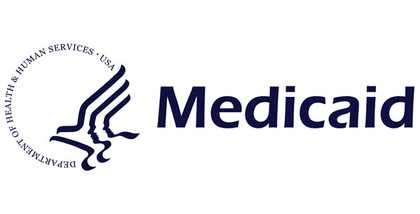An orthodontic emergency can arise unexpectedly, causing discomfort or complications during your treatment.






Save $250 off braces or Invisalign!*
Schedule your appointment online.
An orthodontic emergency can arise unexpectedly, causing discomfort or complications during your treatment. It typically involves issues that require immediate attention from your orthodontist to prevent further damage or to alleviate pain. So, what is an orthodontic emergency? Understanding what is considered an orthodontic emergency is essential for both patients and parents, as it allows for timely interventions and peace of mind. Whether you are experiencing a loose bracket, a poking wire, or any other concerning issue, knowing how to identify and manage these situations can help ensure your orthodontic journey remains on track. In this article, we will delve deeper into the nature of orthodontic emergencies, the common types you may encounter, and effective management strategies.
Understanding Orthodontic Emergencies
Orthodontic emergencies refer to situations that require immediate attention from an orthodontist, typically due to pain or discomfort arising from braces or other orthodontic devices. Common examples include broken brackets, loose wires, or any injury to the mouth caused by orthodontic appliances. These emergencies can lead to significant discomfort and can potentially hinder the progress of your orthodontic treatment.
It’s essential to distinguish between orthodontic emergencies and routine issues. Routine issues might include minor discomfort after adjustments or food getting stuck in braces, which, while bothersome, do not require urgent care. In contrast, emergencies often necessitate prompt intervention to prevent further complications or delays in treatment. Recognizing the difference helps patients respond appropriately and ensures that they receive the right level of care when they need it most.
Addressing orthodontic emergencies promptly is crucial for maintaining the health of your teeth and gums, as well as the effectiveness of your treatment plan. Delaying treatment can lead to increased pain, prolonged treatment times, and even potential damage to your teeth. If you experience any orthodontic issues that seem urgent, don’t hesitate to contact your orthodontist. At uncommonortho.com, we prioritize your comfort and well-being, ensuring that you receive the highest quality of care when emergencies arise.
Common Types of Orthodontic Emergencies
Orthodontic emergencies can occur unexpectedly and may lead to discomfort or concern. Understanding what is considered an orthodontic emergency can help you respond appropriately and maintain your oral health.
One of the most frequent issues patients face is loose or broken braces and wires. This can happen due to various reasons, including eating hard foods or accidental impacts. If you find that a bracket has become detached or a wire is poking your gums, it’s important to contact your orthodontist promptly. In the meantime, you can use orthodontic wax to cover any sharp edges to prevent irritation. You should not need to contact emergency services for this type of problem.
Another common emergency involves discomfort caused by orthodontic appliances. As your teeth shift, you may experience soreness, especially after adjustments. While some discomfort is normal, excessive pain may indicate a problem with your braces or aligners. If you’re experiencing significant pain, consult your orthodontist to ensure everything is functioning correctly. Again, this sort of problem can be handled by calling your orthodontist office.
Injuries to the mouth related to orthodontic treatment can also be classified as emergencies. Accidental falls or sports injuries can lead to cuts or bruises in the mouth, exacerbated by braces or other orthodontic appliances. If you sustain an injury, it’s essential to seek medical attention if bleeding persists or if you have difficulty eating or speaking.
Being aware of these common types of orthodontic emergencies can help you manage any issues that arise effectively. Always consult your orthodontist for guidance and support when faced with an unexpected situation.
How to Manage an Orthodontic Emergency
Experiencing an orthodontic emergency can be stressful, but knowing how to manage it can help alleviate some of that anxiety. The first step is to assess the situation. If you have a loose or broken bracket, gently press it back into place if possible. For a wire that is poking or causing discomfort, try using a pair of tweezers to reposition it or cover the end with wax to prevent irritation. If you have a lost separator, don’t panic; it’s not an urgent issue, and you can contact your orthodontist for guidance.
Knowing what to do when braces wire is poking cheek is crucial. If you experience severe pain, bleeding, or if a wire is embedded in your gum or cheek, it’s essential to contact your orthodontist immediately. Many orthodontic offices offer emergency services or on-call advice, so don’t hesitate to reach out if you’re unsure.
Prevention is always better than cure, so consider these tips to reduce the likelihood of emergencies. Always adhere to your orthodontist’s guidelines regarding food choices—steer clear of hard, sticky, or chewy foods that can damage your braces. Regularly check your orthodontic appliances for any signs of wear and tear, and maintain good oral hygiene to prevent issues that may lead to emergencies. Lastly, keep an orthodontic emergency kit handy, including orthodontic wax, a small pair of tweezers, and any necessary contact information for your orthodontist.
Additionally, it’s important to understand what happens if you swallow dental wax. While dental wax is generally non-toxic and safe to use, accidentally swallowing a small amount is usually not harmful. However, if you experience any adverse reactions or discomfort, seek medical advice promptly.








